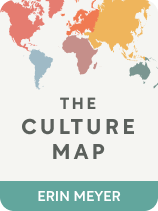

This article is an excerpt from the Shortform book guide to "The Culture Map" by Erin Meyer. Shortform has the world's best summaries and analyses of books you should be reading.
Like this article? Sign up for a free trial here .
How do Asians think about and view the word? Which aspects do they tend to focus on? Which ones do they de-emphasize?
According to cultural communication expert Erin Meyer, Asians are “dialectical thinkers.” Dialectical thinking focuses on the big picture and the relationships between the different elements rather than the elements themselves.
In this article, we’ll discuss how Asians think, according to cultural communication expert Meyer.
Understanding Asian Thought
The key feature of Asian thinking is that it focuses on the overall situation. Instead of focusing on individual elements, Asians emphasize the relationships between individual elements. In business, this focus on relationships is evident in longer responses to questions (because they’re focused on the big picture, people might present related information first before giving their final answers).
Meyer suggests that most Asian cultures think dialectically because of the Chinese philosophies that influenced them. These philosophies tend to value balance between individual elements. Additionally, Meyer notes that Chinese philosophies don’t separate an act or object from the circumstances surrounding it. Rather, they consider both in concert.
She gives the example of the Chinese concept of yin and yang as support for both these ideas. Yin and yang are related to balance because they represent how dueling concepts like light and dark can actually be complementary. But they’re also related to holistic thinking because they must both exist—one can’t exist without the other.
(Shortform note: Although Meyer notes that yin and yang were developed by Taoists and influenced Confucian philosophies, she doesn’t mention that each philosophy favored a particular element of the yin-yang duality. The Taoists, whose philosophy emphasized seclusion, preferred the feminine yin, while Confucianism, which is primarily focused on the relationships in public life, favored the masculine yang.)
Alternatively, Asian countries may tend toward dialectical thinking because of their high-context communication styles. Since high-context cultures have few explicit communication rules, these cultures consider many factors at once when determining how to act. As such they’re far more used to encountering contradictions—which results in a greater acceptance of contradictions and a tendency to think dialectically.
An Alternate Explanation for How Asian Thought Developed
This paper suggests that Asian countries tend toward dialectical thinking not because of philosophical influence but because of their high-context communication styles. Low-context cultures have explicit rules, and they select which ones to follow in specific situations. So they only have to consider the situational factors relevant to their selected rule. The rules of high-context cultures are far less explicit. So these cultures consider many factors at once when determining how to act, which means they’re far more used to encountering contradictions—which results in a greater acceptance of contradictions and a tendency to think dialectically.
| How Western and Asian Dialectical Thinkers Differ According to Nisbett, dialectical thinkers are more accepting of contradiction as a fact of life, so they often try to find the middle ground. Sounds great, right? But an acceptance of contradiction could be problematic in business. For example, you might have to convince dialectical thinkers that a problem needs solving at all. But this acceptance of contradiction may be a feature of East Asian dialectical thinkers instead of Western ones. Although Westerners are also capable of thinking dialectically, studies suggest that Westerners and East Asians do so differently. Westerners think about the contradictions until they’re able to synthesize them, while East Asians aren’t as bothered by and generally more accepting of the contradiction to begin with.) |

———End of Preview———
Like what you just read? Read the rest of the world's best book summary and analysis of Erin Meyer's "The Culture Map" at Shortform .
Here's what you'll find in our full The Culture Map summary :
- The eight axes you can use as a framework to analyze cultural differences
- How to better relate to those of another culture to accomplish business goals
- How the Vikings have more gender equality than we see today





